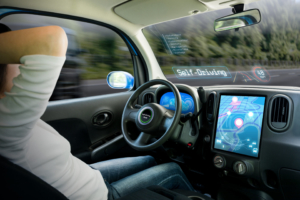One of the only certainties since the very dawn of automated vehicle technology has been the inevitability of accidents. The simple fact of the matter being that by taking human beings out of the equation, you eliminate the best possible fail safe in the event that something goes wrong. It may be true to say that computers can technically drive better than human beings, but computers also make mistakes…just like human beings.
 If the headlines somehow slipped you by, one of the latest driverless cars currently being tested by Uber tragically hit and killed a pedestrian in Arizona earlier this month. Not that this is the first time autonomous vehicles have been involved in fatal accidents. A driver died in 2016 when the automated technology in his Tesla failed to spot a hazard in the road.
If the headlines somehow slipped you by, one of the latest driverless cars currently being tested by Uber tragically hit and killed a pedestrian in Arizona earlier this month. Not that this is the first time autonomous vehicles have been involved in fatal accidents. A driver died in 2016 when the automated technology in his Tesla failed to spot a hazard in the road.
In the latest instance, it has been ruled categorically that Uber wasn’t to blame for the accident. Tragic as it was, the finger of blame has been pointed at the pedestrian, who came out of nowhere and stepped in front of the vehicle, leaving it with no time whatsoever to slow down or avoid her. As such, authorities reached the conclusion that the same result would have occurred even if there was a human driver behind the wheel.
Unsurprisingly however, this doesn’t make any real difference in the eyes of both legislators and members of the public alike. The public in general is continually calling for tighter regulation of automated vehicle testing programs – Uber having already gone ahead and temporarily halted its own program.
Just because Uber wasn’t to blame doesn’t mean incidents like these aren’t having a vastly adverse impact on the way automated driving technology is being viewed by the public in general.
With the way things are going at the moment, it is looking increasingly unlikely that comprehensive driverless vehicles will play much of a role in our everyday transportation during our lifetime. The reason being that the whole industry is facing something of a catch:22 situation. On one hand, driverless vehicle technology has spectacular potential. On the other, it cannot and will not achieve its full potential until it undergoes the broadest and most on-going testing on an international basis.
Something the general public apparently isn’t interested in seeing anytime soon.
When the idea of driverless cars was first floated quite some time ago, general public response wasn’t enormously positive. For one thing, the general population today doesn’t trust computer technology enough with such an important responsibility. For another, a huge proportion of the driving population takes enormous pleasure in driving, therefore would prefer not to hand the controls over to a robot.
In any case, letting go of the wheel and allowing computers to take over probably isn’t something we’ll be doing anytime soon. Even if driverless vehicle technology isn’t entirely destined for the scrap heap, it’s nowhere near ready to bring about the revolution many had predicted to kick in long before now.
















